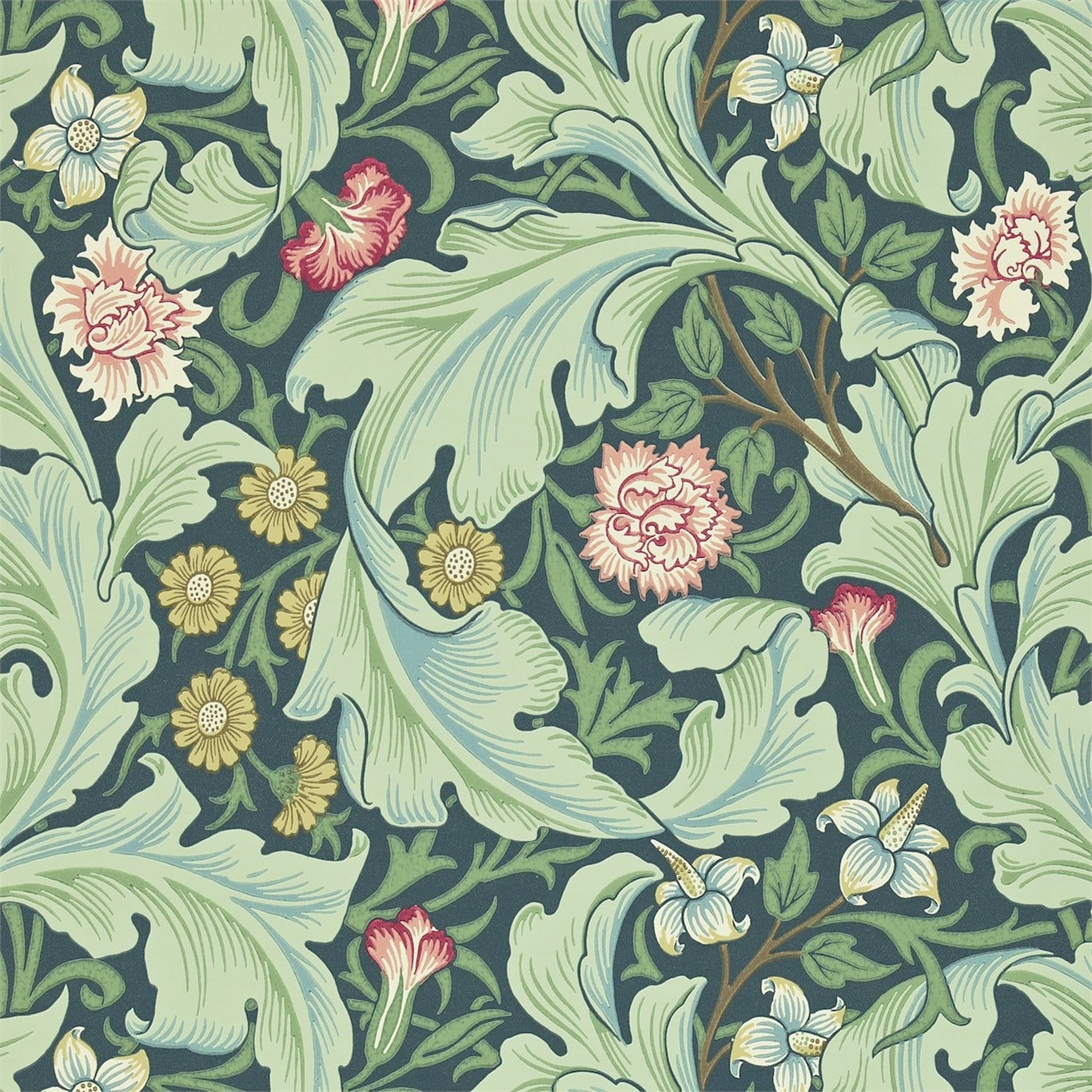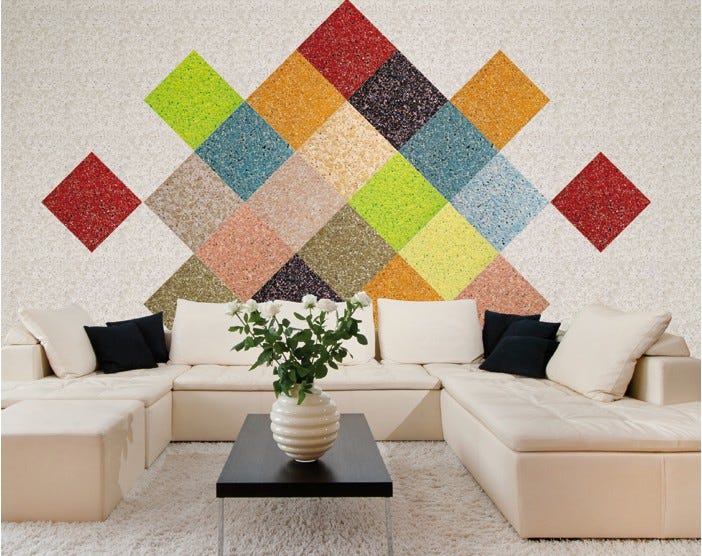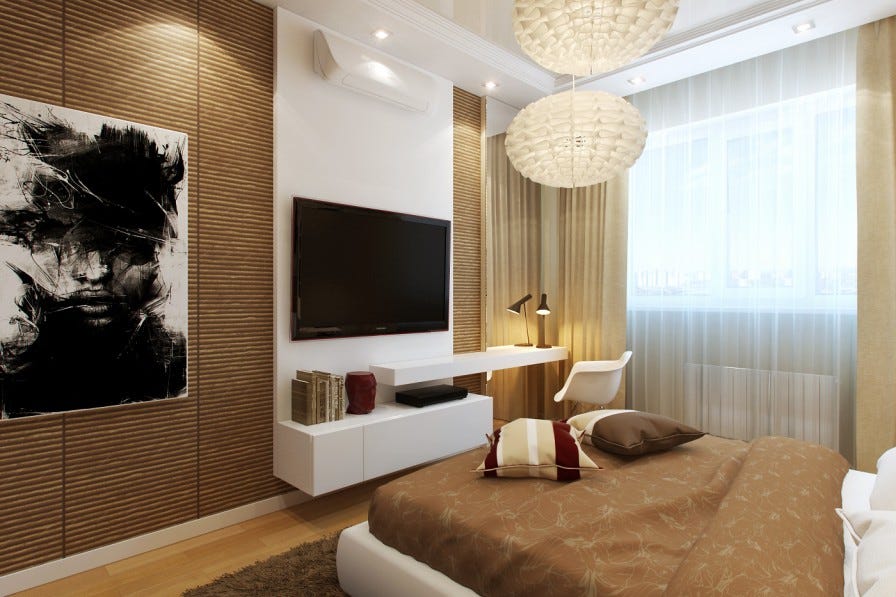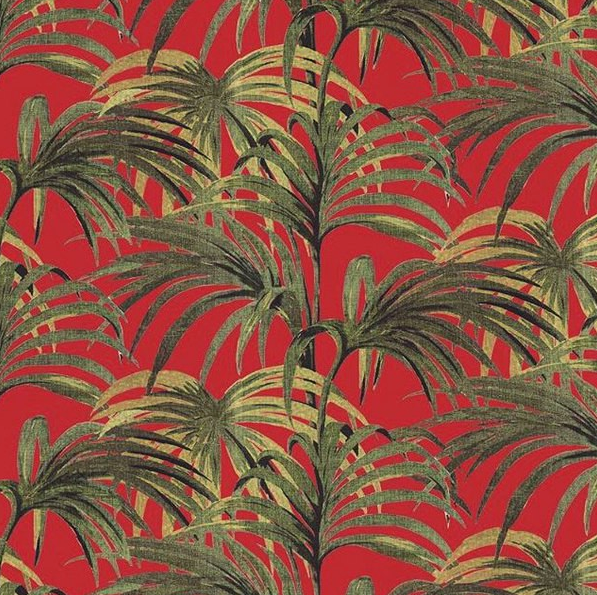Lining Paper
Isn’t a decorative wallpaper as it does not have a printed or decorative finish. It’s applied to bare walls or ceilings in preparation for painting or papering with decorative wallpaper. The main purpose of lining paper is to cover minor imperfections on a surface before painting it or to hide a strong colour previously applied to walls or ceilings before a lighter colour wallpaper or paint is to be applied.
Traditional Wallpaper
One of the most popular type. Can be single (simplex) or double (duplex) layered. Cellulose is the main component of the product. They are very ecological, they let walls breathe, therefore they are widely used for bedrooms (children bedrooms especially) and dining rooms. They are very affordable and accessible, can be literary found in any design store. However, the colours fade away in the sun, and they are not washable. Some of the wallpapers are less resistant to moist, therefore it is hard to apply them to a wall without washing away some of the colour or them being stretched. Most of iconic “William Morris” and “Sanderson” wallpapers are made of cellulose.

Vinyl Wallpaper
A very popular type of wallpapers. They consist of a backing layer, paper or fibre, and a plastic upper coating. Their practical day to day advantages are obvious: they are washable, light- resistant, relatively cheap and extremely durable which makes them the ideal candidate of frequently used rooms (kitchens, dining rooms, bathrooms). Should only be changed every 10–20 years. Vinyl wallpapers vary greatly in colour and pattern, they can imitate wood, stone, concrete, etc. However, they do not allow the walls to breathe, they might extract toxic fumes, so they should not be used in bedrooms and badly ventilated spaces. Because of their “artificial” nature, you either love it or hate it.

Textured and embossed wallpapers add depth and an interesting contrast to plain walls. The textures can range from delicate and soft fabric inspired imprints through to dramatic geometrics. The most popular colours are cream, stone and taupe as these create a wonderful natural palette which can co-ordinate with most other accent and feature colours. Embossed wallpaper can hide the wall defects: scratches, cracks and wall roughness in general. They can be painted over. Disadvantages are its hard to glue them right (cause with time the edges start to bend and stratify), it is also hard to peel them off the wall, also by removing the embossed wallpaper, you risk to damage the plastering.

Liquid Wallpaper
They consist of cellulose and cotton fibre. Have to be applied in a liquid form with the help of a special pallet. Such wallpaper have a high level from the clutch surface that allows their use even in rooms with uneven walls, defects and cracks on the surface. Repair of damaged sites wallpaper is quite easy: you should only remove the coating from this area, mix with water, add fresh filler and apply spatula back. It takes 24 hours to fully dry. It is ecological and easy to use. It has a good thermal and sound insulation. Has an anti-static and effect. It is composed of natural materials, non-toxic. Allows the wall “to breathe” and controls the amount of moisture in the room. Does not have connecting seams. In a way, it is similar to paint, different patterns and images can be manually drawn on the wall or ceiling. However, this material has a significant disadvantage: it can be easily rinsed off with water. On the other hand, this is a plus when you remove the old layer of liquid wallpaper. When inaccurately applied it makes the room look very cheap and untidy.

Non-Woven wallpaper
The non-woven wallpapers are the latest trend in decorating. Non-wovens are made of a special blend of natural and synthetic fibres, making them washable and breathable. You will find these fibres in many household products such as tea bags, coffee filters, and gauze. Because these wallpapers are able to breathe, this makes them a perfect application for kitchens and bathrooms. These wall-coverings are also tear-resistant. This is a great advantage as the wallpapers will not get torn during installation or removal. They are the most user-friendly and eco-friendly wallpapers on the market today, they are incredibly easy, admirably quicker and requiring fewer efforts to install. This type of wallpaper neither expands nor contracts, so they do not change their size. It can be also used as a base for painting. However, non-woven wallpaper is expensive and non-washable.
Fibreglass Wallpaper
As the name suggests they are made of glass fibres woven and bonded together to form a sheet material. Due to the way wallpaper is produced they are incredibly strong and provide a great reinforcement to any wall or ceiling. Made from natural non-toxic materials like quartz, soda, lime and dolomite they are considered to be a green product too. They are flame resistant and prevent flames from spreading, a key benefit in fire-safety. After professional application, they can be over-painted many times without peeling or even plastered over. Fibreglass wallpaper is a great way to treat often appearing wall cracks. Special water-resistant adhesive and glass fibres provide a barrier for dampness showing through. Their insulating properties will reduce or even stop mould growth. Fibreglass is a lightweight, extremely strong, and robust material. Their bulk strength and weight properties are also very favourable when compared to metals, and it can be easily formed using moulding processes. Common uses of fibreglass include high-performance aircraft’s (gliders), boats, automobiles, baths, hot tubs, water tanks, roofing, pipes, cladding, casts, surfboards, and external door skins. Disadvantages of using it are a high price, low flexibility.

Bamboo Wallpaper
Made of bamboo, an environmentally friendly natural product. They do not change the colour for a long period of time. Because bamboo is a “natural” material, it can be affected by high moisture and isn’t very cleanable. Many manufacturers recommend limiting cleaning to gentle dusting or vacuuming. So bamboo wallpapers are not recommended for kitchen backsplashes (unless manufactured for this purpose), areas where they may come in contact with food or other possible staining materials. Also, they should not be used in areas with high levels of moisture such as bathrooms or under-grade rooms unless they are pre-sealed or you plan to seal or paint it yourself. Bamboo has an antiseptic characteristic, so it does not only prevent moss from growing but also kills some of the germs. The disadvantages are: high price and high level of dust accumulation (so the walls have to be cleaned with a hoover often), the edges of wallpapers will always be seen.

Textile wallpaper
Is an elite product. Its premium quality creates a sense of wellbeing. It can be made of: silk, cotton, linen, felt, raffia, twines or feathers can all be used to gorgeous effect. Fabric wallpapers are breathable, flame- retardant, stain-resistant, and provide exceptional insulation quality They are extremely expensive and hard to apply on walls.

